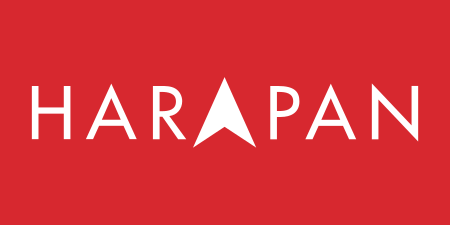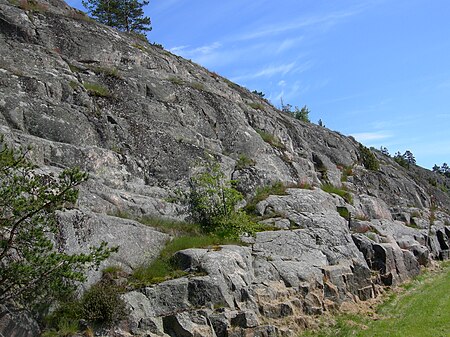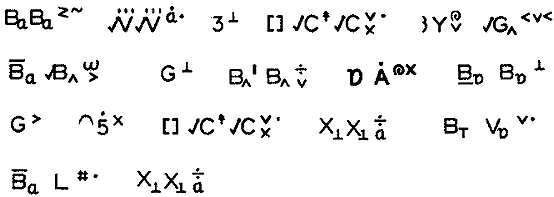Stokoe notation
| |||||||||||||||||||||||||||||||||||||||||||||||||||||||||||||||||||||||||||||||||||||||||||||||||||||||||||||||||||||||||||||||||||||||||||||||||||||||||||||||||||||||||||||||||||||||||||||||||||||||||||||||||||||||||||||||||||||||||||||||||||||||||||||||||||||||||||||||||||||||||||||||||||||||||||||||||||||||||||||||||||||||||||||||||||
Read other articles:

Polish/German embryologist, physiologist, and neurologist For his grandson, see Robert Remak (mathematician). Robert RemakRemak c. 1850-1855Born12 July 1815Posen, PrussiaDied29 August 1865 (1865-08-30) (aged 50)Bad Kissingen, BavariaAlma materUniversity of BerlinKnown forEctoderm, mesoderm and endodermScientific careerFieldsEmbryologyPhysiologyNeurologyDoctoral advisorFerdinand Georg FrobeniusHermann Amandus Schwarz Robert Remak (26 July 1815 – 29 August 1865) was an …

この記事は検証可能な参考文献や出典が全く示されていないか、不十分です。出典を追加して記事の信頼性向上にご協力ください。(このテンプレートの使い方)出典検索?: コルク – ニュース · 書籍 · スカラー · CiNii · J-STAGE · NDL · dlib.jp · ジャパンサーチ · TWL(2017年4月) コルクを打ち抜いて作った瓶の栓 コルク(木栓、蘭&…

此條目介紹的是馬來西亞的政黨。关于同名已解散的香港政黨,请见「希望聯盟 (香港政黨)」。 希望联盟Pakatan HarapanAlliance of Hope希望联盟标志马来语名称Pakatan Harapanڤاكتن هارڤن替代语言:Aliansi Harapan英语名称Alliance of Hope替代语言:Pakatan Harapan Plus华语名称希望联盟Xīwàng liánméng淡米尔名称நம்பிக்கை கூட்டணி简称PH、希盟主席安华共同主席旺阿�…

此條目可参照英語維基百科相應條目来扩充。 (2021年5月6日)若您熟悉来源语言和主题,请协助参考外语维基百科扩充条目。请勿直接提交机械翻译,也不要翻译不可靠、低品质内容。依版权协议,译文需在编辑摘要注明来源,或于讨论页顶部标记{{Translated page}}标签。 约翰斯顿环礁Kalama Atoll 美國本土外小島嶼 Johnston Atoll 旗幟颂歌:《星條旗》The Star-Spangled Banner約翰斯頓環礁地�…

土库曼斯坦总统土库曼斯坦国徽土库曼斯坦总统旗現任谢尔达尔·别尔德穆哈梅多夫自2022年3月19日官邸阿什哈巴德总统府(Oguzkhan Presidential Palace)機關所在地阿什哈巴德任命者直接选举任期7年,可连选连任首任萨帕尔穆拉特·尼亚佐夫设立1991年10月27日 土库曼斯坦土库曼斯坦政府与政治 国家政府 土库曼斯坦宪法 国旗 国徽 国歌 立法機關(英语:National Council of Turkmenistan) 土�…

此條目可能包含不适用或被曲解的引用资料,部分内容的准确性无法被证實。 (2023年1月5日)请协助校核其中的错误以改善这篇条目。详情请参见条目的讨论页。 各国相关 主題列表 索引 国内生产总值 石油储量 国防预算 武装部队(军事) 官方语言 人口統計 人口密度 生育率 出生率 死亡率 自杀率 谋杀率 失业率 储蓄率 识字率 出口额 进口额 煤产量 发电量 监禁率 死刑 国债 外…

「アプリケーション」はこの項目へ転送されています。英語の意味については「wikt:応用」、「wikt:application」をご覧ください。 この記事には複数の問題があります。改善やノートページでの議論にご協力ください。 出典がまったく示されていないか不十分です。内容に関する文献や情報源が必要です。(2018年4月) 古い情報を更新する必要があります。(2021年3月)出典�…

منتخب أستراليا لكرة القدم معلومات عامة بلد الرياضة أستراليا الفئة كرة القدم للرجال رمز الفيفا AUS تاريخ التأسيس 1922 الاتحاد اتحاد أستراليا لكرة القدم كونفدرالية آفك (آسيا) الملعب الرئيسي ملعب سيدني لكرة القدم الموقع الرسمي الموقع الرسمي الطاقم واللاعبون المد…

بابا طاهر معلومات شخصية الميلاد 935مهورامان الوفاة 1010ممدينة همدان مكان الدفن مدينة همدان،إيران مواطنة إيران الديانة مسلم الحياة العملية المهنة شاعر، وكاتب اللغات الفارسية تعديل مصدري - تعديل مرقد بابا طاهر شمال همدان. بابا طاهر صوفي، وشاعر اللري&#…

Questa voce sull'argomento centri abitati di El Salvador è solo un abbozzo. Contribuisci a migliorarla secondo le convenzioni di Wikipedia. Santa Anacomune Santa Ana – Veduta LocalizzazioneStato El Salvador DipartimentoSanta Ana AmministrazioneAlcaldeJoaquín Alfredo Peñate Ardón dal 2012 TerritorioCoordinate14°00′N 89°34′W14°00′N, 89°34′W (Santa Ana) Altitudine644 m s.l.m. Superficie400,05 km² Abitanti245 421 (2007) Densità613,48 ab./km…

Marina MniszechTsaritsa Seluruh RusiaPeriode1605–1606Penobatan8 Mei 1606Informasi pribadiKelahiran1588Laszki Murowane, Takhta Kerajaan Polandia[1]Kematian24 Desember 1614 (age 26)Kolomna Kremlin, Ketsaran RusiaWangsa Wangsa MniszechWangsa RurikNama lengkapMarina Yurievna MniszechAyahJerzy MniszechIbuJadwiga Tarło-MniszechPasanganDmitriy I palsuDmitriy II palsuIvan ZarutskyAnakIvan DmitriyevichAgamaKatolik Roma Marina Mniszech (Polandia: Maryna Mniszech;[2] Russian: Марин�…

1899–1902 war in South Africa Boer War redirects here. For the first conflict, see First Boer War. For other uses, see Boer War (disambiguation). Second Boer WarPart of the Boer WarsClockwise from top left: Boers in action at the Battle of Colenso The 17th Lancers holding off an attack at Elands River Boers at the besieged city of Mafeking Boer militia at the Battle of Spion Kop Canadian troops during the Battle of Paardeberg General Redvers Buller entering Ladysmith on 27 Feb 1900 Date11 Octo…

Glacial erosion of bedrock Zone of plucking in the formation of tarns and cirques Glacially-plucked granitic bedrock near Mariehamn, Åland Plucking, also referred to as quarrying, is a glacial phenomenon that is responsible for the weathering and erosion of pieces of bedrock, especially large joint blocks. This occurs in a type of glacier called a valley glacier. As a glacier moves down a valley, friction causes the basal ice of the glacier to melt and infiltrate joints (cracks) in the bedrock.…

Jordanian muslim scholar SheikhNuh al-QudahTitleGrand Mufti of JordanPersonalBorn1939Ain Jana, Ajloun, TransjordanDied19 December 2010 (aged 70–71)ReligionIslamNationalityJordanianDenominationSunni IslamJurisprudenceShafi'iCreedAsh'ariAlma materDamascus University, Al-Azhar University, Imam Muhammad ibn Saud Islamic UniversityMuslim leader Influenced Sa'id Foudah Nuh Ali Salman al-Qudah (1939 – 19 December 2010) was a Jordanian Muslim scholar and the Grand Mufti of Jordan from …

System of surcharging users of public goods that are subject to congestion This article is about traffic congestion pricing. For other types of congestion pricing, see Dynamic pricing and Variable pricing. For the broader concept of direct charges paid by road users, see Road pricing. Electronic Road Pricing gantry in Singapore, the first place in the world to implement an urban cordon area congestion pricing scheme Part of a series onEconomics History Outline Index Branches and classifications …

Mimata 三股町Kota kecil BenderaLambangLokasi Mimata di Prefektur MiyazakiNegara JepangWilayahKyūshūPrefektur MiyazakiDistrikKitamorokataLuas • Total110 km2 (40 sq mi)Populasi (Oktober 1, 2015) • Total25.404 • Kepadatan230,95/km2 (59,820/sq mi)Zona waktuUTC+9 (Waktu Standar Jepang)Kode pos889-1995Simbol • PohonGinkgo biloba• BungaRhododendron indicum• BurungEmberiza cioidesNomor telepon0986-52-1111Alamat1-…

Part of a series onForced labour and slavery Contemporary Child labour Child soldiers Conscription Debt Forced marriage Bride buying Child marriage Wife selling Forced prostitution Human trafficking Peonage Penal labour Contemporary Africa 21st-century jihadism Sexual slavery Wage slavery Historical Antiquity Egypt Babylonia Greece Rome Medieval Europe Ancillae Black Sea slave trade Byzantine Empire Kholop Prague slave trade Serfs History In Russia Emancipation Thrall Venetian slave trade Balkan…

1961 single by Elvis Presley For the 2017 film, see Can't Help Falling in Love (film). Can't Help Falling in LoveOne of original 1961 North American variants of the standard artworkSingle by Elvis Presleyfrom the album Blue Hawaii B-sideRock-A-Hula BabyReleasedNovember 22, 1961RecordedMarch 23, 1961StudioRadio Recorders, HollywoodGenrePopLength2:59LabelRCA VictorSongwriter(s)Hugo PerettiLuigi CreatoreGeorge David Weiss[1]Producer(s)Elvis Presley (Joseph Lilley for Paramount Pictures)[…

Artikel ini perlu diwikifikasi agar memenuhi standar kualitas Wikipedia. Anda dapat memberikan bantuan berupa penambahan pranala dalam, atau dengan merapikan tata letak dari artikel ini. Untuk keterangan lebih lanjut, klik [tampil] di bagian kanan. Mengganti markah HTML dengan markah wiki bila dimungkinkan. Tambahkan pranala wiki. Bila dirasa perlu, buatlah pautan ke artikel wiki lainnya dengan cara menambahkan [[ dan ]] pada kata yang bersangkutan (lihat WP:LINK untuk keterangan lebih lanjut). …


